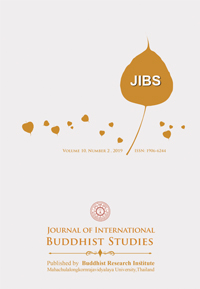Scheduled Castes, Conversions and Socio- economic differentials: A Comparative Study of Two Social Groups in Maharashtra State
Keywords:
Scheduled Caste, Conversion, Buddhism, Socio-eco differentials, Dr AmbedkarAbstract
The Scheduled castes in India constitute 16.2 per cent of India’s total population and their presence can be found in all over India with different proportions. The potential of Buddhism as an instrument of social change and its sociological relevance to address a social problem (Untouchability) was well realized by Dr. Ambedkar and he appealed to all downtrodden and oppressed people to embrace Buddhism for their emancipations and to live a life with dignity and respect. Of the 59 SCs in Maharshtra only the Mahars (Neo-Buddhist) got converted into Buddhism in 1956. The other two dominant SCs in Maharashtra namely Matang and Chamar preferred to remain in the old Hindu fold as Hindu Dalits. The influence of Buddhism on Neo-Buddhist is not restricted to its spiritual realm alone but it is helping the people to their all-round development in all spheres of life It has brought the psychological changes and changed their life styles.(Kurne, 1997, Sharma, 2003, Beltz, 2005, ).It is now a well-known fact that there is a wide Socio-economic disparity between the converted and non-converted scheduled castes in Maharashtra state. The present study tries to find out the reasons behind their disparity and to what extent the conversion to Buddhism as an intervention has helped or not helped to the converted formerly untouchable castes.
References
Directorate of economics and stastics, planning department (2014-15). Economic survey of Maharashtra. Mumbai: Government of Maha- rashtra
Rao Chinna Yagati.(2009). Dividing Dalits: Writings on sub-categoriza- tion of scheduled castes. New Delhi: Rawat Publications.
Eleanor Zelliot (2005). Learning the use of political means: The Mahars of Maharashtra in Teltumbade Anand ed Hindutava and Dalits. Kolkata: Samya Publication
Chalam K.S (2009). The fragmented assertion: Emergence of intra-caste differentiation among Dalits in India in Vagati Chinna Rao ed. Dividing Dalits: Writings on subcategorization of scheduled caste. New Delhi: Rawat Publications.
Damle Y. B. (1982). Caste, religion and politics in India. New Delhi: Oxford and IBH Publishing CO.
Ramchandra and Sangh Mitra (2003). Dalits and their future. New Delhi: Common Wealth Publication.
Sharma S. P. (2003). Dr. B.R. Ambedkar: A crusader of social justice. Jaipur: RBSA Publications.
Patwardhan Sunanda (1965). A study of scheduled caste in an urban set- ting. Ph. D. thesis submitted to University of Pune.
Shastree Uttara (1998). Neo-Buddhists: As a Marginal Group in India, Ph. D. Thesis submitted to University of Pune.
Johannes BeltZ, (2005). Mahar, Buddhist and Dalit: Religious Conver- sion and Socio-Political Emancipation. New Delhi: Manohar Publi- cations.
Kurne Anjali (1997). Ethnic Identity and Social Mobility: A Case Study of the Buddhist in Pune. Ph. D. thesis submitted to University of Pune.







